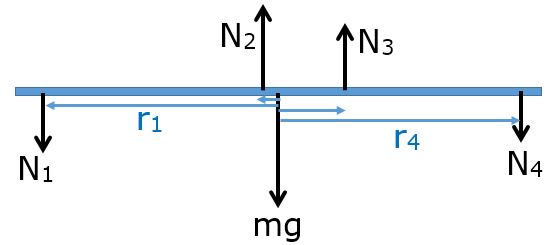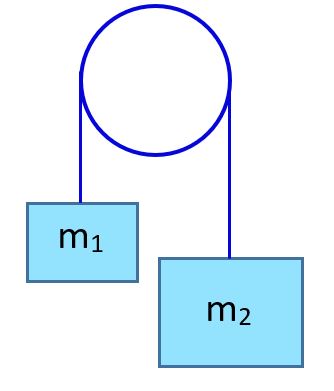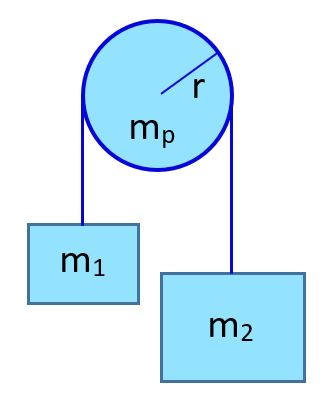Static equilibrium

A rigid object is in static equilibrium if the net torque is zero at every point on the object, and the net force on the object is zero.
Step 1: Draw an extended free-body diagram representing the forces and their locations on the object.

Step 2: Translate the diagram into its mathematical equivalent, beginning with writing the equation for net force.



Step 4: Algebraically solve for the unknown quantity.


Rotational dynamics
If the net torque is not zero, the system will exhibit angular acceleration. This is the rotational equivalent of Newton's second law.

The mass is replaced with the moment of inertia denoting that the mass distribution is now important, and the acceleration is replaced with angular acceleration.
2. A block of mass m is attached to a cord wrapped around a flywheel with mass M and radius r. How fast is the block moving after it accelerates downward a distance h, assuming it starts from rest?

3. Consider a system where Block 1 of mass m1 is connected to Block 2 of mass m2 by a massless string over a massless, frictionless pulley. Assume m2 > m1. Find the acceleration of the system.

Consider a system where Block 1 of mass m1 is connected to Block 2 of mass m2 by a massless string over a frictionless pulley of mass mp and radius r. Assume m2 > m1. Find the acceleration of the system.

Image source